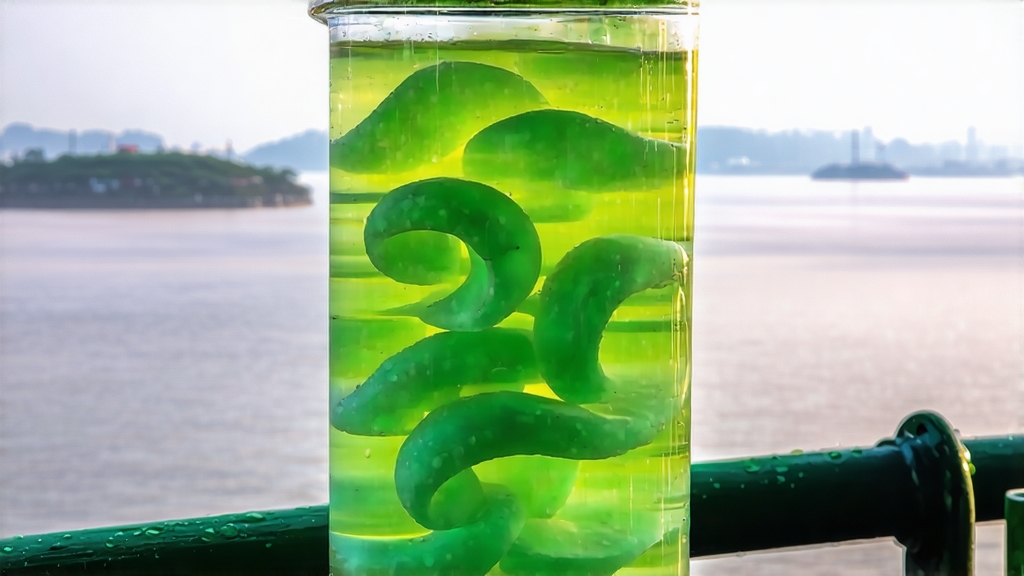
Biluochun, whose name translates literally to “Green Snail Spring,” is one of China’s ten most celebrated teas, yet among Western connoisseurs it remains an undiscovered jewel. Grown on the mist-laden peninsulas of Taihu Lake in Jiangsu Province, this tea seduces with a fragrance so intense that, according to Qing-dynasty legend, a passing emperor caught the scent on the breeze and demanded to know what flower bloomed out of season; when told it was merely tea being roasted, he christened it “Scary Fragrance.” Court etiquette later found the epithet too vulgar, so the court scholars rechristened it Biluochun, referencing both its tight spiral shape and the season of earliest picking.
History and Terroir
The recorded history of Biluochun begins in the late Tang dynasty (ninth century), but its apotheosis arrived during the Kangxi reign (1662-1722) when it entered the imperial tribute list. The tea grows on Dongting Mountain, actually two islands—Dongshan and Xishan—rising from the vast brackish Taihu. The lake moderates temperature, stores daytime heat, and releases cool night mist, creating a natural greenhouse. Around the tea bushes, fruit trees—peach, plum, apricot, and loquat—are interplanted intentionally. Their simultaneous spring bloom showers the tea buds with pollen and volatile esters, accounting for Biluochun’s unmistakable fruity-floral bouquet. No other Chinese green tea is co-cultivated in such an arboreal perfume bath.
Cultivars and Grades
Although the original landrace is a small-leaf Camellia sinensis var. sinensis locally called “Xiao Ye Zhong,” clonal selections have been made since the 1970s. The two most widespread are Dongting #1, prized for cold tolerance and early sprouting, and Dongting #2, which trades a slight yield reduction for higher amino acids and sweetness. Grading follows a 1-to-7 scale based on picking date, bud-to-leaf ratio, and percentage of broken tips. Special Supreme (Te Ji) is picked on the first two mornings after Qingming festival, consisting exclusively of single buds that resemble tiny green snails covered in silvery down. Grade 1 allows one bud and one unfolding leaf, while Grade 3, still excellent, may contain two leaves and is marketed abroad as “everyday Biluochun.”
Plucking Discipline
The harvest window is brutally short: the bud must be plucked within 48 hours of reaching “sparrow’s tongue” length, i.e., 1.5–2 cm. Experienced pickers work from 5 a.m. to 9 a.m., when dew still guards the leaves from bruising. They pinch, never pull, dropping the buds into shallow bamboo trays lined with gauze. A full day’s work yields barely 500 g of fresh leaf, which shrinks to 100 g after firing—explaining why top-grade Biluochun rivals silver in price.
Crafting the Spiral
Biluochun is the only Chinese green tea whose shaping step is done while the leaf is still hot and wet, allowing the signature tight curl to set. The entire process spans forty minutes and is traditionally divided into six stages:
- Withering: trays are rested in shade for two hours to reduce grassy notes.
- Kill-green (shaqing): leaves are tossed in a drum pan pre-heated to 180 °C for ninety seconds; enzymes are deactivated while moisture drops to 60 %.
- Rolling: the hot leaves are transferred to a straw-work cushion and kneaded under palm pressure for five minutes, breaking cell walls without fracturing the surface.
- First curling: the most iconic step. A master presses a palm-full of tea against the wok wall at 70 °C, using a wrist-flick motion that coils the bud into a spiral. The gesture is repeated 300–400 times over seven minutes.
- Second curling & aroma fixing: temperature is lowered to 50 °C; spirals tighten and downy hairs become visible.
- Final drying: five minutes at 40 °C reduces moisture to 5 %, locking in fragrance.
The finished tea resembles miniature jade snails, each weighing 0.03 g and capable of unfurling into a complete bud-and-leaf set when steeped.
Chemical Signature
High-performance liquid chromatography shows that top-grade Biluoch